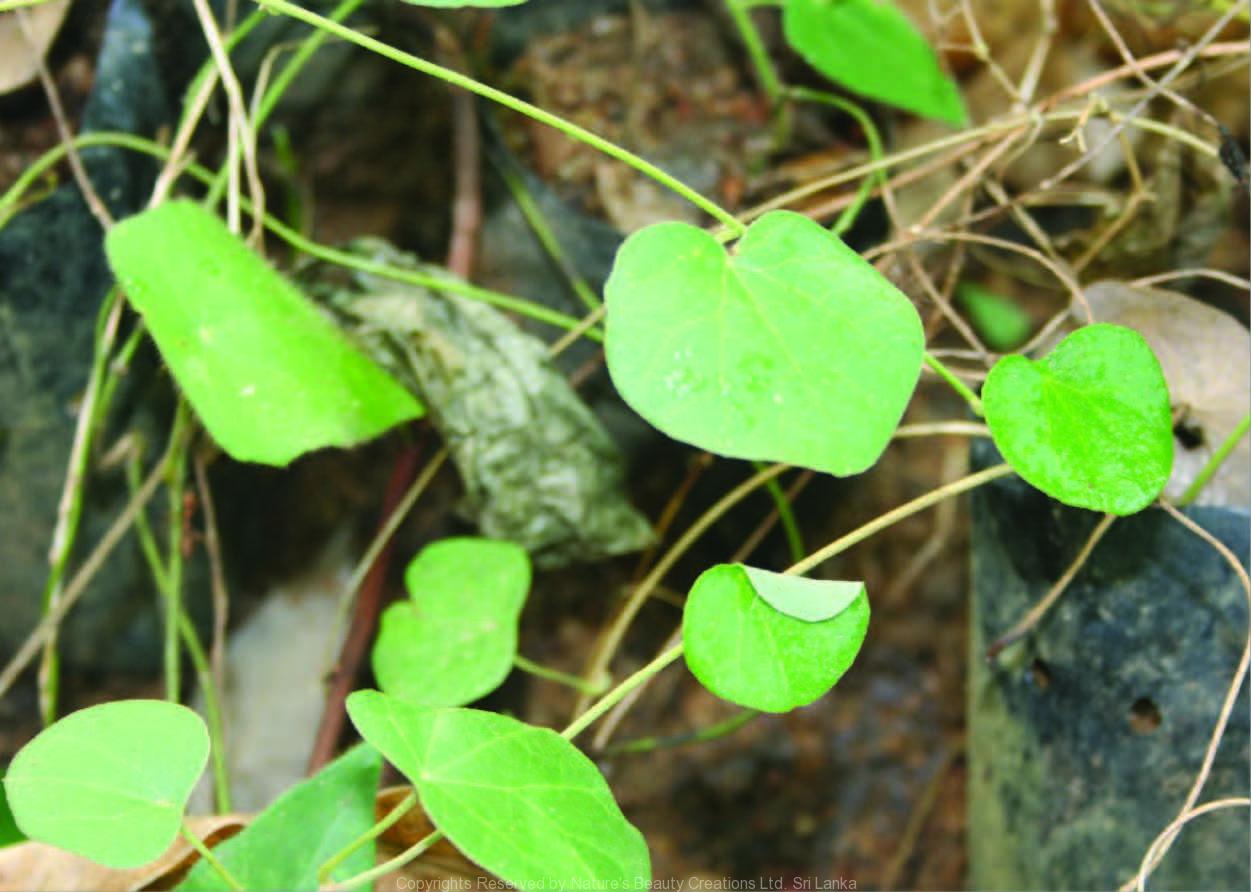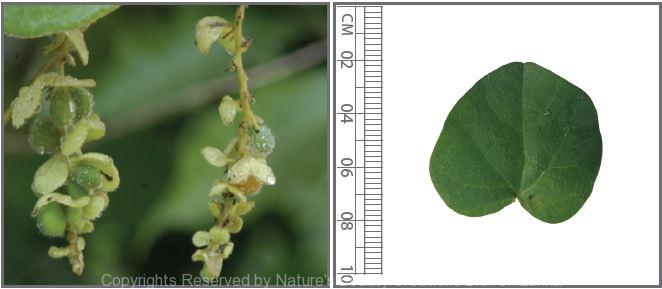

Traditional Knowledge
Useful plant parts :
Leaf and root
Uses in traditional medicine :
- Crushed leaves are applied on ulcers and wounds
- Decoction of the root is diuretic
- Leaves are used as an anti-scabies remedy
- Roots act as a febrifuge, diuretic, lithotripter, pectoral purgative in chronic cystitis, nephritic colic, nephritis, vesicular calculus, fever, diarrhoea, urinary and venereal diseases, stones in the bladder, chronic inflammation of the urinary tract and in fish poisoning
Scientific Research
Chemical constituents:
Chalcone flavonoid: cissampeloflavone from aerial parts; bisbenzylisoquinoline alkaloid: cissarnpareine, l-curine, d-iso-chondrodendrine and hayatin, tropoloisoquinoline alkaloids: pareirubrines A and B, grandirubrine and isoimerubrine from plant
Bioactivity :
Cissampeloflavone: active against Trypanosoma cruzi and T. brucei rhodesiense; aqueous ethanol extract of roots: antioxidative, antiarthritic, hepatoprotective, anti-inflammatory, antinociceptive; methanol extract of leaves: antifertility effects; bisbenzylisoquinoline alkaloids: anticancer; Pareirubrines A,B: antileukemic
Clinical:
References : Amresh, G. et al., (2007), Evaluation of anti-inflammatory activity of Cissampelos pareira root in rats, Journal of Ethnopharmacology, 110, 526-531. Amresh, G. et al., (2007), Antinociceptive and antiarthritic activity of Cissampelos pareira roots, Journal of Ethnopharmacology, 111, 531-536. Amresh, G. et al., (2010), Antioxidant activity of Cissampelos pareira on benzo(a)pyrene-induced mucosal injury in mice, Nutrition Research, 27(10), 625-632. Ganguly, M. et al., (2007), Antifertility activity of the methanolic leaf extract of Cissampelos pareira in female albino mice, J Ethnopharmacol, 11(3), 688-91. Kupchan, S. M. et al., (1960), Menispermaceae alkaloids I. The alkaloids of Cissampelos pareira Linn. and the origin of radix pareirae bravae, Journal of the American Pharmaceutical Association, 49(11), 727-731. Kupchan, S. M. et al., (1965), Tumor inhibitors VI. Cissampareine, new cytotoxic alkaloid from Cissampelos pareira. Cytotoxicity of bisbenzyl- isoquinoline alkaloids, Journal of Pharmaceutical Sciences, 54(4), 580-583. Kupchan, S. M. et al., (1966), Tumor Inhibitors. XV.’ The Structure and Configuration of Cissampareine, a Novel Bisbenzylisoquinoline Alkaloid, Joiirtid of the .hericcm Chemical Society, 88(18), 4212-4218. Morita, H. et al., (1993), Structures and solid state tautomeric forms of two novel antileukemic tropoloisoquinoline alkaloids, pareirubrines A and B, from Cissampelos pareira, Chemical and Pharmaceutical Bulletin, 41(8), 1418-22. Ramirez, I. et al., (2003), Cissampeloflavone, a chalcone flavone dimer from Cissampelos pareira, Phytochemistry, 64, 645-647. Samanta, J. et al., (2012), Phytochemical investigation and pharmacog- nostic standardization of Cissampelos pareira root, Anc Sci Life, 31(4), 181-4. Surendran, S. et al., (2011), In vitro and in vivo hepatoprotective activity of Cissampelos pareira against carbon-tetrachloride induced hepatic damage, Indian J Exp Biol, 49(12), 939-45.
Copyrights Reserved By
Natures Beauty Creations




